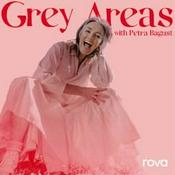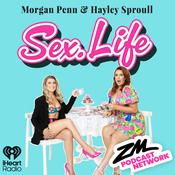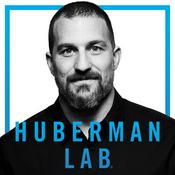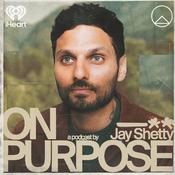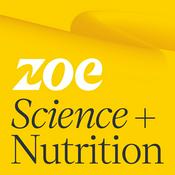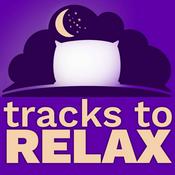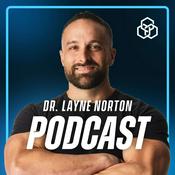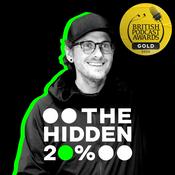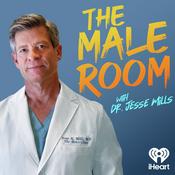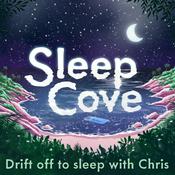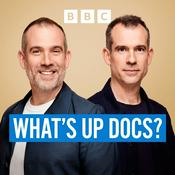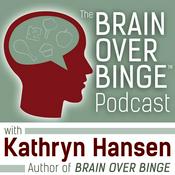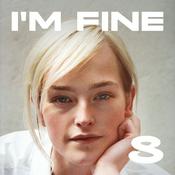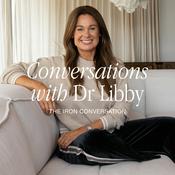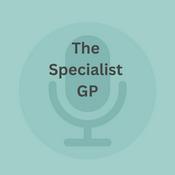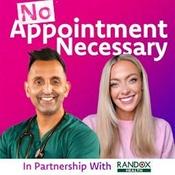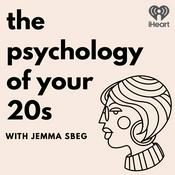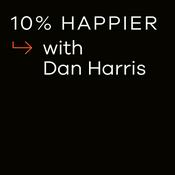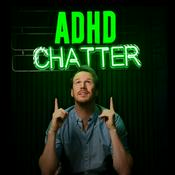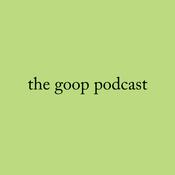Available Episodes
5 of 227
- #207 13 actionable pieces of mental health advice from six former podcast guestsCome to a Dehoarding Accountability Zoom Session: http://www.overcomecompulsivehoarding.co.uk/ticket Subscribe to the podcast: https://www.overcomecompulsivehoarding.co.uk/subscribe Podcast show notes, links and transcript: http://www.overcomecompulsivehoarding.co.uk/ This episode, I’ve pulled together the best mental health advice from every guest I spoke to over the past year - academics, therapists, organisers, and people with lived experience. Each of them shared a personal habit or practice that genuinely helps them cope or keep on top of their wellbeing, and I add a couple of my own strategies too. Whether you’re navigating hoarding, supporting someone who is, or just looking for affordable ways to protect your own mental health, stick around for a mix of practical, honest tips to try for yourself. Special Episode Format: Compilation of Guest Advice Throughout the year, every guest was asked about habits or practices supporting their mental health. Guest Contributions: Mental Health Habits and Practices Harriet Impey (Episode 172) Mindfulness and meditation, especially mindful self-compassion (inspired by Kristin Neff). Practical examples: Being present, guided meditation, practicing non-attachment, and self-reflection on letting go of unhelpful arguments. Dr Jan Eppingstall (Episodes 174 & 204) Practicing gratitude to counterbalance negativity bias. Unsubscribing from unwanted emails to reduce anxiety and overwhelm. Interacting with pets for grounding and emotional well-being - petting animals as a stress reliever. Visiting places where animals are accessible (e.g., city farms, pet shops, animal cafes). Jasmine Sleigh (Episode 175) Importance of good sleep for mental health. Value of pleasurable activities like reading, and the paradox of sometimes resisting enjoyable activities (self-sabotage). Reflection on how engaging in enjoyable pastimes is essential even when it's difficult to get started. Sam (Episode 178) Writing things down: Keeping lists of achievements and things to be grateful for, even small joys. Acknowledging how gratitude doesn’t have to be grand - simple moments count. Exercise, particularly running, or any activity that gets you outside of your current headspace (could be walking, volunteering, etc.). The role of support from others to prompt new perspectives or activities. Dr. Victoria Ruby-Granger (Episode 179) Self-awareness and accepting what works for you, rather than trying to fit yourself to methods that don’t suit. Emphasis on letting go of approaches that don’t align with your own needs, and being open to alternative strategies. Carrie Lagerstedt (Episode 183) Moral neutrality: Separating self-worth from issues like executive dysfunction, lateness, and messiness. Reframing these traits as value-neutral rather than personal failings, helping to build self-esteem. That Hoarder Creative self-expression: Resentful journaling, collage, and visual arts—done primarily for personal expression, not for others’ approval. Permission for creative works to be imperfect and focused on process over outcome. Nature connection: Getting outside, paying attention to natural details (flowers, leaves, colours, wildlife), and practicing mindful observation to foster grounding and perspective. Importance of self-compassion, giving oneself credit for small achievements (especially with meditation or walks). Allowing yourself pleasurable, nurturing, or healing activities without guilt. Noticing the bigger world and natural cycles as a counter to internal struggles. Encouragement for listeners to reflect on which practices resonate and to share their own tips. Links Podcast ep 172: Harriet Impey on clearing out her parents’ very full home, through family belongings and personal growth, in the film Where Dragons Live Podcast episode 174: How to feel grounded when we’re overwhelmed or dysregulated using ventral vagal spaces and touchstones, with Dr Jan Eppingstall Podcast ep 175: Taking the scary first steps: the courage to call a professional organiser, with Jasmine Sleigh Podcast ep 178: Growing up in a hoarded home: Sam’s story as the child of a Mum who hoards Podcast ep 179: How hoarding behaviours develop and early intervention for hoarding disorder, with Dr Victoria Ruby-Granger Podcast ep 183: ADHD, executive dysfunction and creating hacks and systems to reduce clutter chaos, with Carrie Lagerstedt Podcast ep 204: Am I my things? When possessions define us: the psychological connection between identity, self-concept and hoarding with Dr Jan Eppingstall Come to a Dehoarding Accountability Zoom session: Accountability Booking Form Website: Overcome Compulsive Hoarding Become a Dehoarding Darling Submit a topic for the podcast to cover Questions to ask when dehoarding: https://www.overcomecompulsivehoarding.co.uk/podquestions Instagram: @thathoarderpodcast Twitter: @ThatHoarder Mastodon: @[email protected] TikTok: @thathoarderpodcast Facebook: Overcome Compulsive Hoarding with That Hoarder Pinterest: That Hoarder YouTube: Overcome Compulsive Hoarding with That Hoarder Reddit: Overcome Compulsive Hoarding with That Hoarder subreddit Help out: Support this project Sponsor the podcast Subscribe to the podcast Subscribe to the podcast here--------53:05
- #206 Finding connection and community when hoarding feels isolatingCome to a Dehoarding Accountability Zoom Session: http://www.overcomecompulsivehoarding.co.uk/ticket Subscribe to the podcast: https://www.overcomecompulsivehoarding.co.uk/subscribe Podcast show notes, links and transcript: http://www.overcomecompulsivehoarding.co.uk/ Hoarding disorder can feel deeply isolating, and finding genuine connection isn’t always straightforward. In this episode, I talk about building community - both through hoarding-specific peer groups, online spaces, as well as simply nurturing friendships outside the home. I share practical ways to reconnect, set boundaries, and remind yourself that you deserve care and companionship, whatever your home looks like. The Relationship Between Hoarding and Isolation How hoarding and isolation often accompany each other Feelings of shame and concern about being misunderstood Secrecy around hoarding, even from friends Impact of loneliness on motivation and self-worth The fundamental human need for connection Finding Community: Hoarding-Specific Support Benefits of speaking with others who “get” hoarding Relief and authenticity in hoarding-focused communities Misunderstandings and stigma around hoarding in general society Shared language and understanding in dedicated groups Types of Hoarding Communities Peer support groups (both for people who hoard and for their loved ones) Differences between in-person and online groups Dehoarding accountability Zoom groups run by the host Therapy groups led by professionals Online forums, social media groups, and subreddits Choosing a Support Group and Overcoming Barriers The process of finding the right group for your needs Not all groups will fit; trial and error is normal Common barriers: fear of judgment, privacy concerns, and feeling overwhelmed Exploring online versus in-person options based on comfort and access Managing triggers and emotional challenges when joining a group Broadening Community Beyond Hoarding Importance of connection outside of the hoarding context How hoarding can lead to progressive social isolation Ways to set boundaries while still building relationships Alternative Sources of Community & Connection Joining hobby or interest-based groups (gardening, book clubs, crafts, etc.) Attending classes and workshops (in-person or online) Volunteering for shared causes and the benefits it offers Engaging in outdoor activity groups for physical and mental health Involvement in faith communities (acknowledging varied experiences) Nurturing and Rekindling Friendships The value of maintaining and nurturing friendships Strategies for reconnecting with old friends (acknowledging awkwardness) Personal anecdotes demonstrating successful reconnection Maintaining and Deepening Existing Friendships Creative ways of keeping in touch (memes, postcards, regular outings) Showing care and interest without inviting people into your home Importance of honesty about personal limitations Navigating difficult moments with friends through gentle outreach Building New Friendships The importance of patience and consistent small efforts Transitioning from casual acquaintance to meaningful connection Reciprocity and mutual engagement as key to growing relationships Natural pace of friendship development The Value of Self-Compassion Being a good friend to yourself while seeking social connections Avoiding self-blame and catastrophic thinking Recognising your own worth despite challenges related to hoarding Taking Small Steps Toward Connection Encouragement to take actionable, manageable steps to build community Celebrating small efforts toward greater connection Realistic expectations about gradual progress Suggestions for relevant previous podcast episodes on loneliness, accountability, and community Links Podcast ep 200: Things I wish I’d known: a letter to Episode One Me Podcast ep 130: Loneliness and hoarding with Vassia Sarantopoulou: build human connections and combat hoarding-related shame Podcast ep 138: The Accountability Effect: Accountability, encouragement and mutual support when tackling hoarding and dehoarding Come to a Dehoarding Accountability Zoom session: Accountability Booking Form Website: Overcome Compulsive Hoarding Become a Dehoarding Darling Submit a topic for the podcast to cover Questions to ask when dehoarding: https://www.overcomecompulsivehoarding.co.uk/podquestions Instagram: @thathoarderpodcast Twitter: @ThatHoarder Mastodon: @[email protected] TikTok: @thathoarderpodcast Facebook: Overcome Compulsive Hoarding with That Hoarder Pinterest: That Hoarder YouTube: Overcome Compulsive Hoarding with That Hoarder Reddit: Overcome Compulsive Hoarding with That Hoarder subreddit Help out: Support this project Sponsor the podcast Subscribe to the podcast Subscribe to the podcast here--------1:03:40
- #205 How to recover without burning out: using pacing to find your dehoarding rhythmCome to a Dehoarding Accountability Zoom Session: http://www.overcomecompulsivehoarding.co.uk/ticket Subscribe to the podcast: https://www.overcomecompulsivehoarding.co.uk/subscribe Podcast show notes, links and transcript: http://www.overcomecompulsivehoarding.co.uk/ Getting on top of hoarding disorder isn’t about powering through in one big go. It’s all about slowing down, pacing ourselves, and making sure our approach is actually sustainable, both for our bodies and our minds. In this episode, I talk honestly about the risks of burnout and emotional overload when we try to rush the process, and why giving ourselves permission to work in small, manageable steps is key. I’ll share practical ways to set our own pace, spot the warning signs of pushing too hard, and celebrate the progress we make - even when it’s slower than we’d like. The Nature of Recovery from Hoarding Disorder Recovery isn’t a race or a sprint Pressure to fix things quickly—internal and external Debunking the ‘quick fix’ myth Importance of sustainability in recovery Physical Aspects of Dehoarding Physical tasks: sorting, organising, donating, recycling The relentless and exhausting nature of physical dehoarding Risks of pushing too hard: Physical exhaustion and injury Impact of chronic pain, health problems, disability Decision-making fatigue from exhaustion The danger of creating a more overwhelming mess Risks of Burnout Burnout as a consequence of overexertion Emotional impact: quitting, avoidance, dread Dehoarding becomes associated with pain and suffering Emotional Aspects of Pacing Unique emotional relationships with possessions Associations, memories, grief, nostalgia, identity Anxiety and emotional flooding in decision-making The consequences of pushing past emotional limits: Panic, anxiety, rumination Avoidance and procrastination Loss of confidence in decisions Swinging between extremes: keeping everything vs. discarding everything The Impact of Emotional Flooding Damaging relationship with recovery Recovery viewed as painful or traumatic Unrealistic expectations for overnight emotional change Persistence of difficult emotional patterns despite progress Non-Linear Nature of Progress Understanding setbacks and relapses as part of the process Importance of patience and realistic expectations The need to build new emotional and cognitive pathways over time Positive Signs of Emotional Progress Ability to sit with discomfort and uncertainty Recognising and managing patterns and triggers Gradual increase in resilience and emotional tolerance Recognising Gradual Physical and Emotional Recovery Improved recovery time after difficult sessions Growing confidence in handling challenges Learning that healing and progress are not linear Practical Approaches to Pacing Time-based strategies: Working in manageable time chunks Scheduling regular breaks and days off Focusing on sustainable, consistent sessions over marathons Decision-based strategies: Limiting the number of decisions per session Identifying easier vs. harder tasks or categories Quick wins to boost motivation Checking in with oneself physically and emotionally during work Building in soothing or rewarding activities post-session Signs of Sustainable Pacing Completing sessions feeling tired but not destroyed Feeling able to return for future sessions without dread Making decisions that feel good in retrospect Enjoyment and pride in gradually improving one’s space Adapting Pace to Life Circumstances Pace varies with health, mood, season, responsibilities Finding what works for the individual and the current season of life Compassionate Recovery The importance of self-compassion in setting and respecting limits Celebrating progress and honouring our human experience Links Come to a Dehoarding Accountability Zoom session: Accountability Booking Form Website: Overcome Compulsive Hoarding Become a Dehoarding Darling Submit a topic for the podcast to cover Questions to ask when dehoarding: https://www.overcomecompulsivehoarding.co.uk/podquestions Instagram: @thathoarderpodcast Twitter: @ThatHoarder Mastodon: @[email protected] TikTok: @thathoarderpodcast Facebook: Overcome Compulsive Hoarding with That Hoarder Pinterest: That Hoarder YouTube: Overcome Compulsive Hoarding with That Hoarder Reddit: Overcome Compulsive Hoarding with That Hoarder subreddit Help out: Support this project Sponsor the podcast Subscribe to the podcast Subscribe to the podcast here--------38:42
- #204 Am I my things? When possessions define us: the psychological connection between identity, self-concept and hoarding with Dr Jan EppingstallCome to a Dehoarding Accountability Zoom Session: http://www.overcomecompulsivehoarding.co.uk/ticket Subscribe to the podcast: https://www.overcomecompulsivehoarding.co.uk/subscribe Podcast show notes, links and transcript: http://www.overcomecompulsivehoarding.co.uk/ On this episode, I’m joined by Dr Jan Eppingstall to unpack how our possessions connect with our sense of identity and self-concept, and why letting go can feel so threatening for those of us who hoard. We talk through how objects hold meaning, memories, and dreams for the future, and what it looks like to build a stronger sense of self without clinging to things. If you’ve ever felt like discarding something meant losing a part of yourself, you definitely want to listen to this one. We break down exactly why that fear happens and where to start. A plant pot associated with negative experiences. Discussion of emotional and aesthetic reasons for keeping vs. discarding. Objects “glowering" at us. Identity and Self-Concept in Hoarding Definition of identity and self-concept. Possessions and Sense of Identity The psychological process of possessions intertwining with identity. How this differs from typical sentimental attachment. Retention itself (rather than use or display) as a meaning-making act in hoarding. The difference between identity (roles, characteristics, life story) and self-concept (beliefs about self, worth, and abilities). Typical patterns seen in people with hoarding disorder: fragmented identity, externalised identity via objects. Psychological Fusion Between Identity and Possessions The concept of "identity objects" — how discarding items feels like losing part of oneself. Objects as external proof and storage for identity, memory, and meaning. Safety of objects over human relationships. The cycle of validation and shame in hoarding. Pathways to Possession-Identity Fusion Childhood experiences and boundary violations leading to control needs. Identity confusion and external markers for self-definition. Psychological ownership: objects as self-extension. Functions of retained objects—proof of past, present, and future self. Anthropomorphism and obligations to objects. Executive function challenges: objects as external memory aids. Perfectionism and fantasy identity protection. Influence of cultural materialism and marketing. The Fear of Losing Identity When Discarding Objects "Throwing away part of myself." Three psychological routes for ownership: control, intimate knowledge, and personal investment. The role of control and avoidance of uncertainty. The painful admission of poor judgment (e.g., unworn clothing) when discarding. Possessions as Identity Markers Retaining items from past roles (retired teachers, old job materials). Holding onto objects representing hopes for future identity. Objects as evidence for important life chapters, relationships, or personal history. Psychological needs these objects serve and when that becomes problematic. Books as Proof of Intellectual Identity Discussion of books held as evidence of being intellectual, regardless of actual reading. Exploration of how objects can become substitutes for action and risk. Therapeutic approach to shifting identity building from possession to action. Community and Connection in the Hoarding Journey The loneliness and isolation frequently felt by people who hoard. The importance of community, connection, and peer support, including podcast listeners and accountability sessions. Effects of increased openness and connection on identity. Identity Shifts During Dehoarding and Recovery Changes in identity during the process of recovery and letting go. Building new narratives — sometimes research or recovery itself becomes an identity. Increased connection and belonging through shared experience and vulnerability. Maintaining Identity Without Excessive Possession Strategies for building identity through actions, creativity, and lived experience. Selecting representative or truly meaningful items rather than keeping everything. Observing how "non-hoarding" individuals make decisions about sentimental items. Discomfort and growth opportunities in sharing one's journey while still in progress. The value of authenticity and vulnerability. First Steps for Listeners Fearing Loss of Self Through Discarding Acknowledging that fear is rational and understandable. Suggesting mindful observation of attachment thoughts. Testing beliefs by gentle action, e.g., creative tasks with what is already available. Finding supportive people for accountability and encouragement. Reflective work on personal values — building identity from the inside. Reassurance that identity predates possessions and is not dependent on them. Objects as scaffolding rather than the core of one’s identity. Encouragement to trust oneself and to start building stability from within. Links Come to a Dehoarding Accountability Zoom session: Accountability Booking Form Dr Jan Eppingstall at Stuffology https://www.facebook.com/stuffologyconsulting/ https://twitter.com/stuff_ology https://www.instagram.com/stuff_ology/ Dr Jan Eppingstall on Pinterest Website: Overcome Compulsive Hoarding Become a Dehoarding Darling Submit a topic for the podcast to cover Questions to ask when dehoarding: https://www.overcomecompulsivehoarding.co.uk/podquestions Instagram: @thathoarderpodcast Twitter: @ThatHoarder Mastodon: @[email protected] TikTok: @thathoarderpodcast Facebook: Overcome Compulsive Hoarding with That Hoarder Pinterest: That Hoarder YouTube: Overcome Compulsive Hoarding with That Hoarder Reddit: Overcome Compulsive Hoarding with That Hoarder subreddit Help out: Support this project Sponsor the podcast Subscribe to the podcast Subscribe to the podcast here--------1:21:21
- #203 How to declutter when you can't reach your shelvesCome to a Dehoarding Accountability Zoom Session: http://www.overcomecompulsivehoarding.co.uk/ticket Subscribe to the podcast: https://www.overcomecompulsivehoarding.co.uk/subscribe Podcast show notes, links and transcript: http://www.overcomecompulsivehoarding.co.uk/ If you’re facing the frustration of knowing where your things belong but just can’t access your shelves or cupboards because there’s too much in the way, this episode is for you. I break down why piling things up with good intentions doesn’t actually solve anything, why decluttering comes before organising, and share honest strategies for making actual progress when your home feels overwhelming. Barriers to Organising Due to Inaccessible Shelves E.g. wanting to keep clothes but can’t access the wardrobe Emotional impact: frustration and the cycle of blocked organisation Layers and spread of clutter that block storage areas The Vicious Cycle of Clutter and Organisation How inaccessible shelves lead to piles that further compound the problem The emotional fallout: self-blame and shame Reframing the struggle as a symptom of hoarding disorder’s progression, not personal failure Coping Strategies & Common Pitfalls Temporary solutions (bags/boxes for items meant for inaccessible areas) and associated risks (forgetting what’s inside) The “out of sight, out of mind” issue Overestimating the capacity of designated spaces for stored items Imperfect Progress and Starting Where You Are Importance of starting without perfect access or planning Emotional and practical aspects of starting with what’s immediately available The danger of over-planning and the value of taking imperfect action Building Momentum: Small Steps and Accessibility Clearing even small spaces leads to broader clearing efforts How minor improvements enable further progress Core Issue: Volume Over Organisation Identifying excessive possessions as the root problem, not lack of organisation Emphasis that organising without decluttering only rearranges clutter Professional advice: dehoarding and decluttering must come before organising The Trap of Reorganisation Without Decluttering The concept of “churn”—moving items around versus actual removal How adding more storage increases clutter, not solves it Real progress comes from discarding items and opening spaces Regaining Access and Realistic Organisation Regaining access to storage areas requires reducing overall volume Setting realistic expectations for what storage spaces can hold Organising solutions are secondary to decluttering Practical Strategies for Decluttering Picking a strategic spot or simply starting wherever you are Focusing efforts (entrances, exits, specific goals, categories) Opening neglected bags/boxes and revealing new priorities Breaking down overwhelming tasks and celebrating small wins Safety Considerations Avoiding dangerous physical manoeuvres to reach blocked areas Importance of asking for help and maintaining physical safety Mindset and Momentum Recognising and celebrating progress, no matter the size Positive reinforcement to build motivation for ongoing decluttering The Hard Truth: Volume Reduction is Essential Acknowledging that reaching shelves requires lowering the overall volume Practical details (where to put items temporarily) less important than reducing quantity Links Come to a Dehoarding Accountability Zoom session: Accountability Booking Form Website: Overcome Compulsive Hoarding Become a Dehoarding Darling Submit a topic for the podcast to cover Questions to ask when dehoarding: https://www.overcomecompulsivehoarding.co.uk/podquestions Instagram: @thathoarderpodcast Twitter: @ThatHoarder Mastodon: @[email protected] TikTok: @thathoarderpodcast Facebook: Overcome Compulsive Hoarding with That Hoarder Pinterest: That Hoarder YouTube: Overcome Compulsive Hoarding with That Hoarder Reddit: Overcome Compulsive Hoarding with That Hoarder subreddit Help out: Support this project Sponsor the podcast Subscribe to the podcast Subscribe to the podcast here--------27:12
More Health & Wellness podcasts
Trending Health & Wellness podcasts
About That Hoarder: Overcome Compulsive Hoarding
Hoarding disorder is stigmatised and people who hoard feel vast amounts of shame. This podcast began life as an audio diary, an anonymous outlet for somebody with this weird condition. That Hoarder speaks about her experiences living with compulsive hoarding, she interviews therapists, academics, researchers, children of hoarders, professional organisers and influencers, and she shares insight and tips for others with the problem. Listened to by people who hoard as well as those who love them and those who work with them, Overcome Compulsive Hoarding with That Hoarder aims to shatter the stigma, share the truth and speak openly and honestly to improve lives.
Podcast websiteListen to That Hoarder: Overcome Compulsive Hoarding, Grey Areas with Petra Bagust and many other podcasts from around the world with the radio.net app

Get the free radio.net app
- Stations and podcasts to bookmark
- Stream via Wi-Fi or Bluetooth
- Supports Carplay & Android Auto
- Many other app features
Get the free radio.net app
- Stations and podcasts to bookmark
- Stream via Wi-Fi or Bluetooth
- Supports Carplay & Android Auto
- Many other app features


That Hoarder: Overcome Compulsive Hoarding
Scan code,
download the app,
start listening.
download the app,
start listening.
